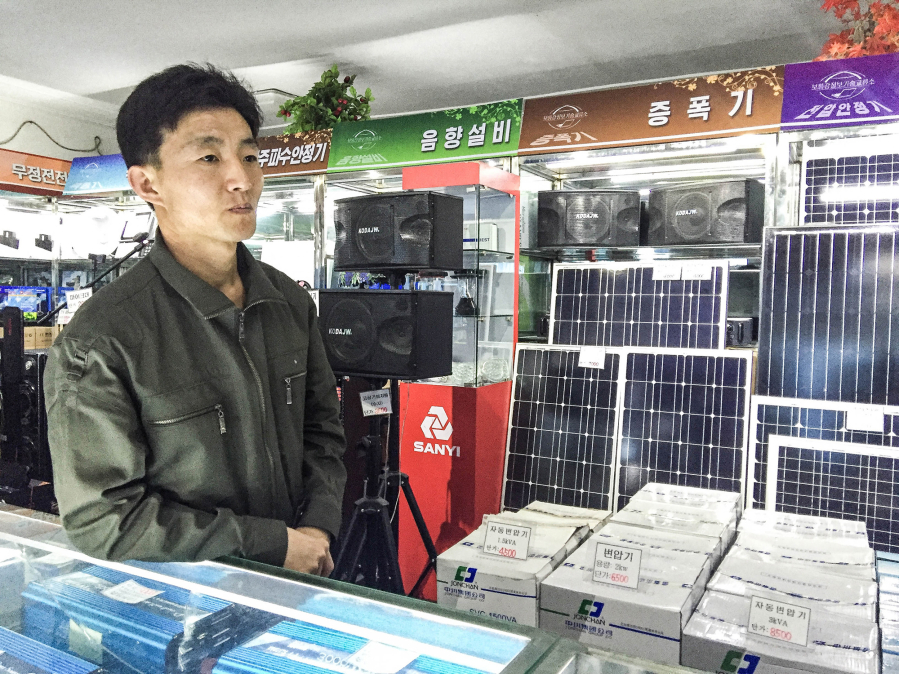PYONGYANG, North Korea — Think of it as a North Korean Best Buy, a shop stuffed with refrigerators, karaoke machines, laptop computers and flat-screen TVs. But with a square footage closer to a typical American 7-Eleven than a big-box store, the Pothonggang Information Technology Center has to be selective about what products it puts on its shelves.
So it’s telling that nearly one whole wall of the shop was crammed recently with solar panels, inverters and battery packs designed to store the sun’s energy. The cheapest panel, a 50-watt Chinese import, was selling for about $35 at the official exchange rate — about a typical month’s wage for a factory worker — and a 200-watt, 24-volt version was going for about $160.
“We’re selling about 150 panels a month,” said a clerk, who had never before seen a foreign reporter walk into his shop and declined to give his name. “Our government has made using natural energy a priority, so from last year we’ve been selling them quite actively. At first, it was individual families, but now factories and offices are buying them, too.”
Beset by crippling power shortages for decades, North Koreans are turning to solar power in a major way. With cheap panels readily available in neighboring China, a gray market expanding in North Korea and a green-energy drive endorsed by supreme leader Kim Jong Un, there’s been a remarkable flowering of photovoltaic panels across the insular country.



